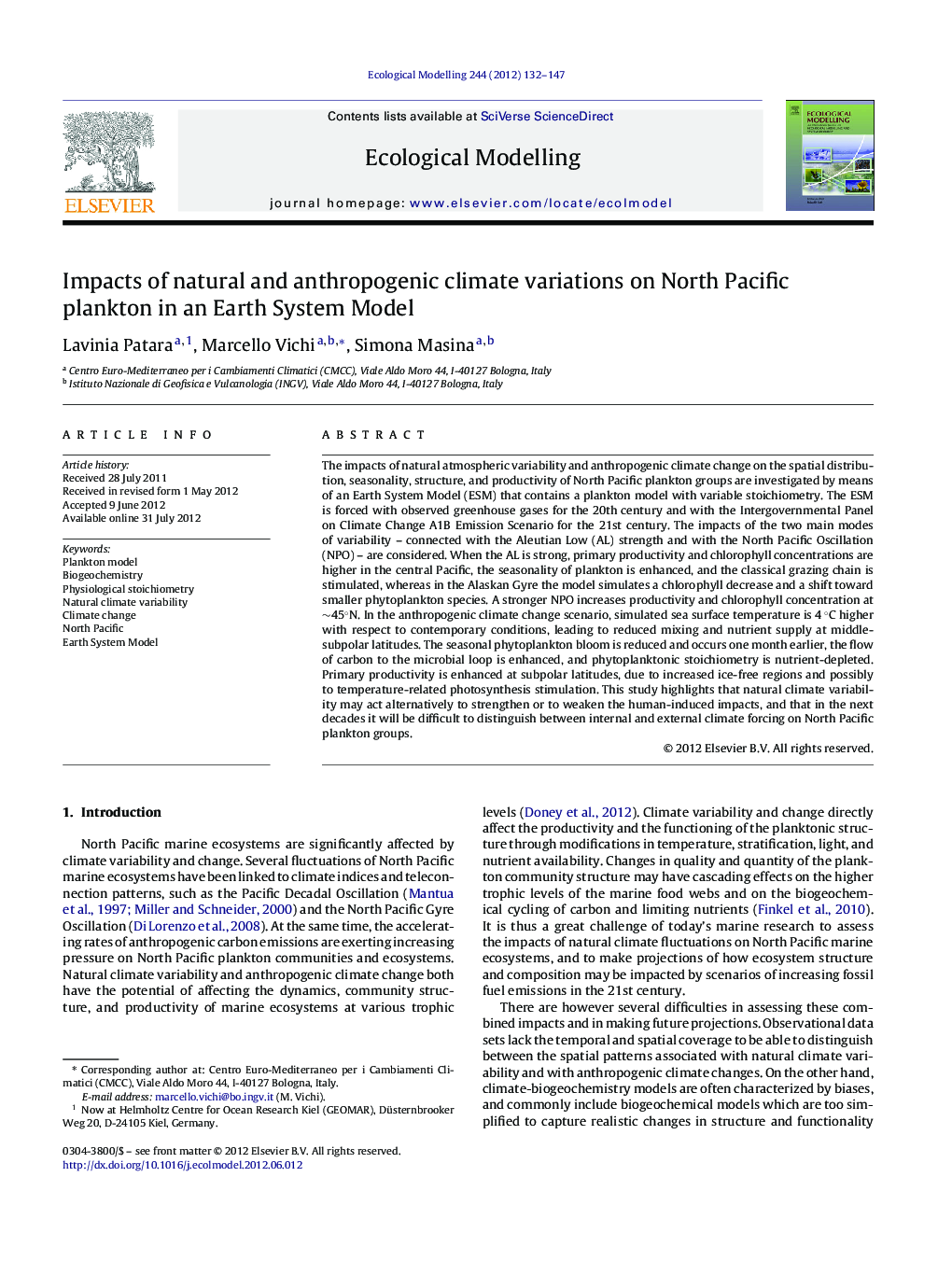| کد مقاله | کد نشریه | سال انتشار | مقاله انگلیسی | نسخه تمام متن |
|---|---|---|---|---|
| 4376402 | 1617501 | 2012 | 16 صفحه PDF | دانلود رایگان |

The impacts of natural atmospheric variability and anthropogenic climate change on the spatial distribution, seasonality, structure, and productivity of North Pacific plankton groups are investigated by means of an Earth System Model (ESM) that contains a plankton model with variable stoichiometry. The ESM is forced with observed greenhouse gases for the 20th century and with the Intergovernmental Panel on Climate Change A1B Emission Scenario for the 21st century. The impacts of the two main modes of variability – connected with the Aleutian Low (AL) strength and with the North Pacific Oscillation (NPO) – are considered. When the AL is strong, primary productivity and chlorophyll concentrations are higher in the central Pacific, the seasonality of plankton is enhanced, and the classical grazing chain is stimulated, whereas in the Alaskan Gyre the model simulates a chlorophyll decrease and a shift toward smaller phytoplankton species. A stronger NPO increases productivity and chlorophyll concentration at ∼45°N. In the anthropogenic climate change scenario, simulated sea surface temperature is 4 °C higher with respect to contemporary conditions, leading to reduced mixing and nutrient supply at middle-subpolar latitudes. The seasonal phytoplankton bloom is reduced and occurs one month earlier, the flow of carbon to the microbial loop is enhanced, and phytoplanktonic stoichiometry is nutrient-depleted. Primary productivity is enhanced at subpolar latitudes, due to increased ice-free regions and possibly to temperature-related photosynthesis stimulation. This study highlights that natural climate variability may act alternatively to strengthen or to weaken the human-induced impacts, and that in the next decades it will be difficult to distinguish between internal and external climate forcing on North Pacific plankton groups.
► A plankton model with variable stoichiometry has been used in a coupled climate study.
► Natural climate variations modify North Pacific plankton biomass by 10–30% while a warming scenario decreases primary production up to 50%.
► DOC production and the microbial foodweb will be favored in a warmer North Pacific.
► Positive phases of natural fluctuations counteract the impacts of global warming.
► Natural and anthropogenic impacts are distinguishable only in the second part of the 21st century.
Journal: Ecological Modelling - Volume 244, 10 October 2012, Pages 132–147